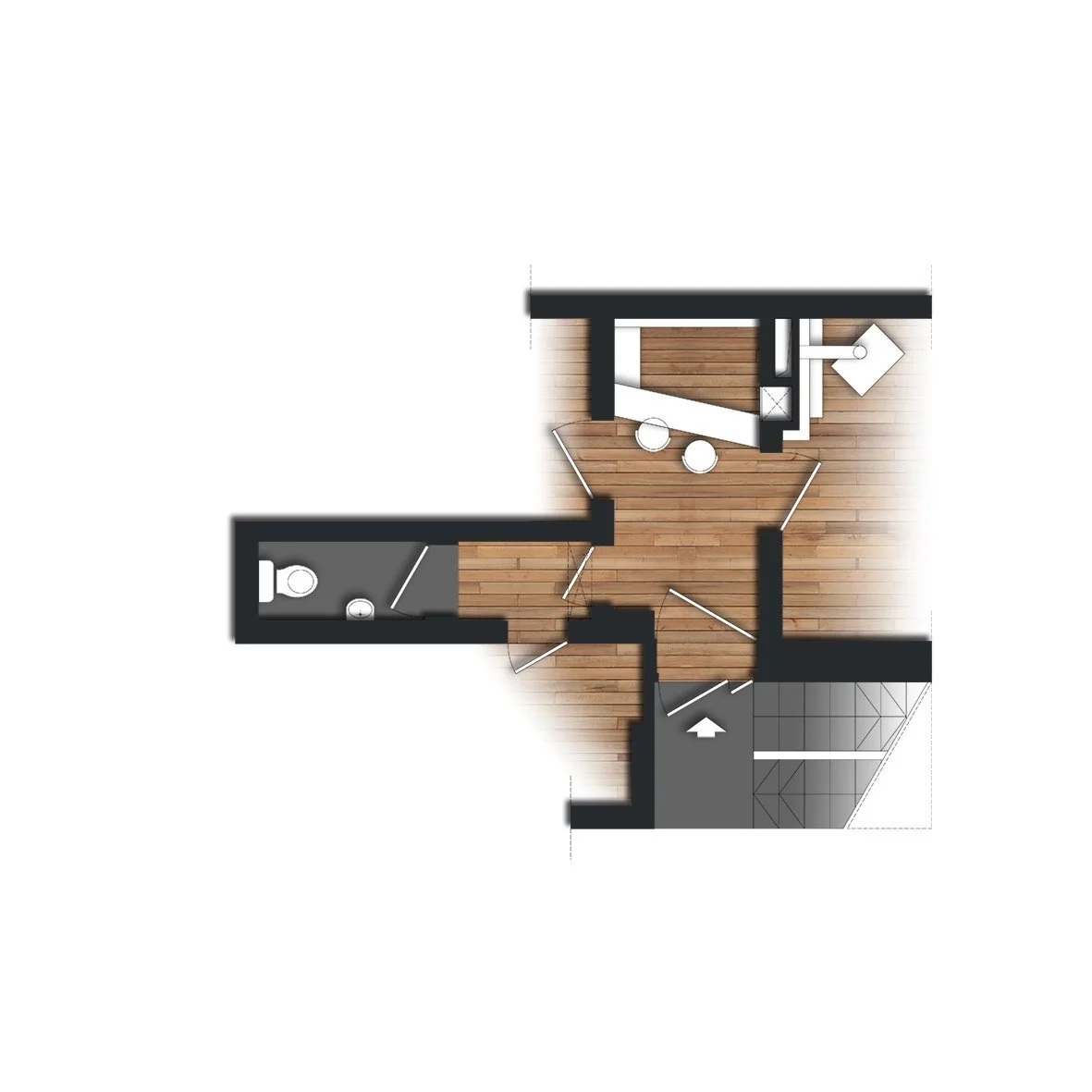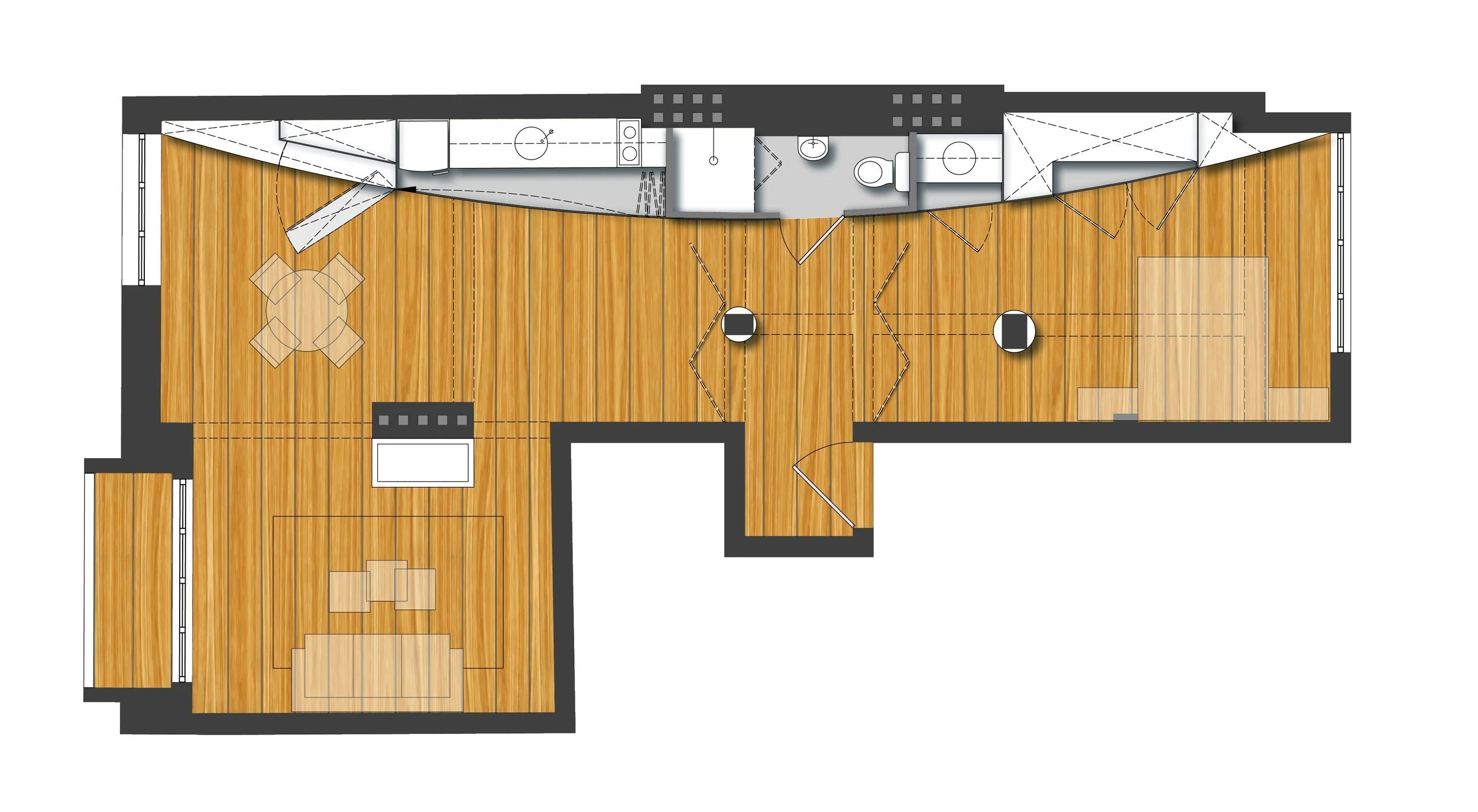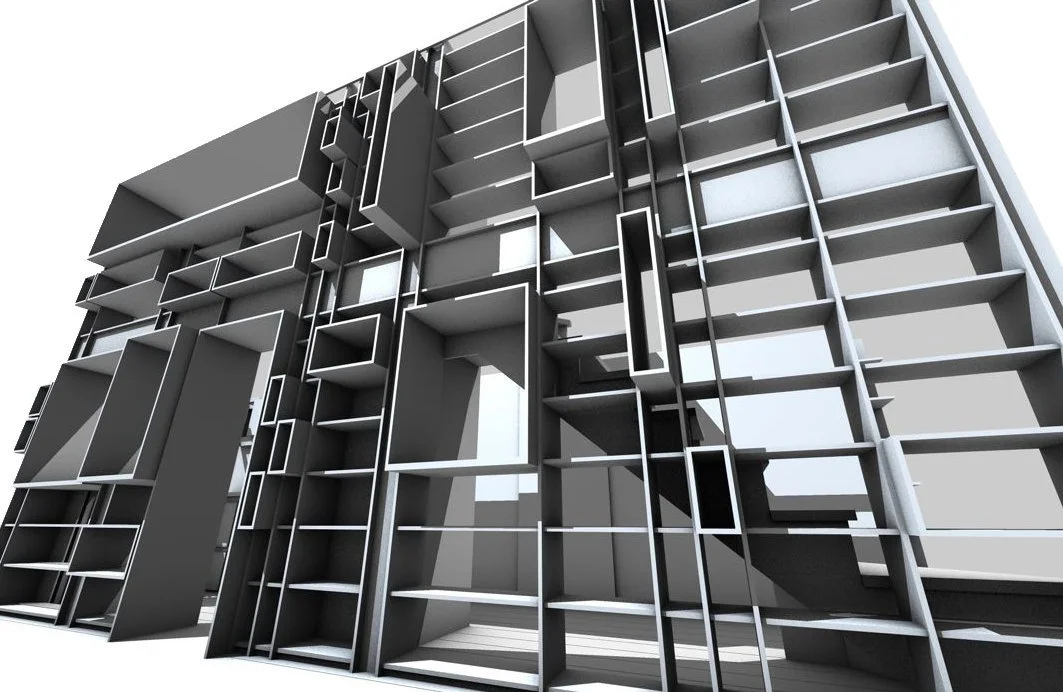Programme I:nterior
The main bookshelves and personal library of the house integrate books, objects, and paintings, creating a curated space that reflects both the home's heritage and the occupants’ personal tastes.
– Refurbishment of a Post-Victorian House, South London (currently in construction):
This project involves a delicate architectural adjustment of the existing layout in a Post-Victorian house in South London.
Our design introduces furniture integrated into the walls, creating spacious rooms that maintain the original plan’s scale while significantly improving functionality.
The layout balances the traditional, eclectic character of the Post-Victorian style with a contemporary
“warm-minimalist” aesthetic, giving the home a sense of heritage and modern comfort.
The second interior, part of Elina’s Three, introduces suspended kiosks — small retreats for working, reading, or meditation. Shown here in red lacquer.
– Elina’s Three:
These are three layout proposals for the apartment of Elina, one of the founding partners of sp+am workshop, submitted to her landlord:
The first variant pragmatically divides the apartment into two separate flats, optimizing the space for practical use.
The second is a spatial investigation that transforms the apartment into a poetic saloon, featuring two suspended work units hanging from the ceiling — creating a dynamic and flexible living environment.
The third vision, still in development, reimagines the apartment with a green garden-bathroom space, merging nature with interior living in a unique and intimate way.
Other interior projects of the Workshop:
Bar.Begemot / Social experiment: dystopian, with a touch of anarchism. Functioning bar inside a private flat - that of an architect.
The Cabinet of All Functions / Apartment conversion as spatial manifesto.
The Shelving House / Pinewood structure within a loft - both shelf and structure.
Our Programme: I:nterior
I:nterior is an anthology of our ideas and experience with the most personal form of space - the kind that sits at the very end of the architectural hierarchy: the space that directly surrounds the people who live in it or use it closely and daily.
We aim to create a logical design language that serves the space itself, rather than a style. This includes dedicated zones, ancillary rooms, furniture embedded in walls. And above all - a deep knowledge of human habits and rituals.
But it’s not just about function. We observe how space has been used across cultures and times to understand the logic behind domestic life. From the stone-weighted layouts of rural Cumbria, to the spatial codes of Bulgarian traditional houses, the layered rituals of Italian domestic life, or the quiet precision of Japanese interiors - these fragments of lived culture offer clues. They help us design spaces that nurture life, more than just framing it.




